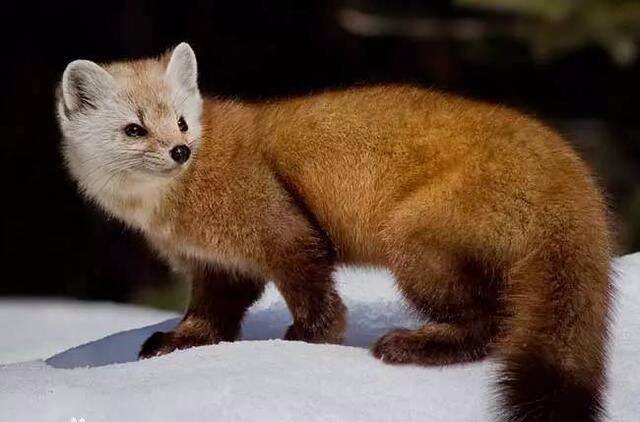Mustela kathiah
IUCN
LCBasic Information
Scientific classification
- name:Mustela kathiah
- Scientific Name:Mustela kathiah,Yellow-bellied Weasel,Mushroom wolf, pine wolf, little yellow wolf
- Outline:Carnivora
- Family:mustelae genus
Vital signs
- length:26-34cm
- Weight:200-300g
- lifetime:8-10years
Feature
The tail is long and thin, and the front and rear toes and pads are well developed.
Distribution and Habitat
Yellow-bellied weasels are distributed in Bhutan, China, India, Lao People's Democratic Republic, Myanmar, Nepal, Thailand, and Vietnam.
Yellow-bellied weasels are distributed in Guangdong, Hainan, Guangxi, Fujian, Zhejiang, Sichuan, Guizhou, Yunnan, Anhui, Hubei, and Taiwan in China.
Yellow-bellied weasels live in mountain forests, grass, low mountains and hills, farmlands, and villages. Sometimes they are also seen in mountains above 3,000 meters.
Appearance
The yellow-bellied weasel is smaller than the yellow-bellied weasel. The tail is long and thin, longer than half the body length. The coat is short. The tail hair is slightly long, but not fluffy. Plantigrade. The palms have sparse short hairs. The front and rear toes and palm pads are well developed. There are 4 palm pads, the first one is small and solitary, like a round shape. The remaining three are epiphytic, with the third being the largest and oval in shape. There is one wrist pad, split in the middle into two pieces of different sizes. 3 plantar pads. The condylar pads are small and round. The claws are short and slightly thin, grayish brown. Two pairs of nipples.
The upper body and back of the yellow-bellied ferret are brown in color. The head, neck, back, limbs and tail are all the same color as the back. The abdomen is sandy yellow from the throat through the lower part of the neck to the mouse and the elbows of the limbs. The hair color of the lower lip and mandible is l
Details
Yellow-bellied Weasel (scientific name: Mustela kathiah) is also known as Yellow-bellied Weasel in English. There are 2 subspecies.

Yellow-bellied Weasel lives in caves, mainly occupying the holes of other animals as nests, and sometimes also makes nests in stone piles, cemeteries or tree holes. It rarely moves during the day, usually starts to move at dusk, especially at night. It is also active in the early morning. The yellow-bellied weasel's range of activities is not wide, and it follows a certain route to enter and exit. There are often "animal paths" formed by it passing through the smooth grass field ridges or hills. It moves alone or in pairs, can swim, but rarely climbs trees. The yellow-bellied weasel is ferocious and agile. When walking, it searches and moves forward in small steps. When chased by other animals, it does not climb trees to hide. The anal gland emits a foul smell and then drills into the cave.
The yellow-bellied weasel mainly feeds on rodents. Like other weasels in the genus Mustela, it will catch rats when it sees them, whether it is hungry or full. Because of its small size, it can get into caves smaller than its body, and even if rodents escape into the cave, it can still be preyed on. It also eats fish, frogs, insects, and occasionally berries.
During the breeding season, males of the yellow-bellied weasel compete for females. They breed once a year, with 2-5 offspring each time.
The yellow-bellied weasel population is not scattered. A small number of this species has been recorded in Laos, probably due to the low frequency of encounters. This species is very common, especially in the forests of southern China. The trend of its population is unknown. This species, like most other weasels, has no major threats, especially forest degradation.
Listed in the 2008 IUCN Red List of Threatened Species ver 3.1 - Least Concern (LC).
Listed in Appendix I, II and III of the Convention on International Trade in Endangered Species of Wild Fauna and Flora (CITES) 2019 Edition Appendix III.
Protect wild animals and eliminate game.
Maintaining ecological balance is everyone's responsibility!








